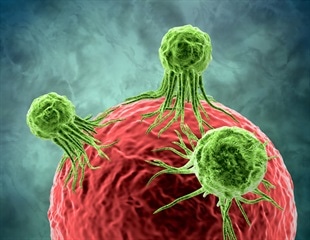2014
Hilary A. Coller
Abstract
Although cancer has historically been viewed as a disorder of proliferation, recent evidence has suggested that it should also be considered a metabolic disease. Growing tumors rewire their metabolic programs to meet and even exceed the bioenergetic and biosynthetic demands of continuous cell growth.
The metabolic profile observed in cancer cells often includes increased consumption of glucose and glutamine, increased glycolysis, changes in the use of metabolic enzyme isoforms, and increased secretion of lactate.
Oncogenes and tumor suppressors have been discovered to have roles in cancer-associated changes in metabolism as well. The metabolic profile of tumor cells has been suggested to reflect the rapid proliferative rate.
Cancer-associated metabolic changes may also reveal the importance of protection against reactive oxygen species or a role for secreted lactate in the tumor microenvironment.
This article reviews recent research in the field of cancer metabolism, raising the following questions: Why do cancer cells shift their metabolism in this way? Are the changes in metabolism in cancer cells a consequence of the changes in proliferation or a driver of cancer progression? Can cancer metabolism be targeted to benefit patients?
Conclusions
The Role of Metabolic Changes in Cancer
For many years, cancer was considered fundamentally a disease of uncontrolled cell proliferation. Although metabolic changes were acknowledged to occur in cancer cells, it was considered a secondary phenomenon. More recently, the metabolic changes that occur during cancer are being reconsidered as more central to the disease itself.
So, is cancer a disease of metabolism? Are the proliferation changes primary and the metabolic changes come along for the ride, or vice versa? One possible model is that oncogenes and tumor suppressors make cancer cells hyperproliferative, and the coordinated shift in metabolism is a consequence.
For instance, MYC would be expected to promote proliferation, whereas the loss of p53 may protect cells from senescence. Because these molecules also affect metabolism, metabolic changes would ensue.
A variation on this model would stress that the effects of oncogenes and tumor suppressors on proliferation are closely associated with metabolic changes that are also necessary to promote cell growth. The similarity in the changes between cancer cells and rapidly proliferating immune cells,15,17,18 and even yeast,109 supports a model in which altered metabolism provides the building blocks needed to form new cells.
From this perspective, inappropriate cell proliferation would still be considered the primary driver of the tumorigenesis phenotype, and the metabolic changes are considered a coordinated and complementary program that supports the higher proliferative rate. Treating cell proliferation will, as a consequence, reverse the metabolic phenotype.
A dramatic demonstration in support of this view is the ability of the tyrosine kinase inhibitor, imatinib, to normalize glucose metabolism in leukemic cells.127
An alternative model would propose that changes in metabolism are necessary to support biomass accumulation and drive the cancer phenotype.
This argument is based on the premise that the aerobic glycolysis phenotype per se, and not just increased growth rate, contributes to tumorigenesis, a statement supported by the findings that glycolytic tumors are more invasive and more likely to cause the patient’s death.6
This argument might stress that the excessive lactate secreted by tumor cells indicates that glucose carbons are not required just for biomass accumulation, but rather that secreted lactate likely actively promotes tumorigenesis, possibly by suppressing the host immune response or promoting invasion or metastasis.
This argument would also stress that the changes in metabolism in tumor cells are more extreme than,117 and somewhat distinct from,24 those observed in most proliferating cells, some of which do not demonstrate the aerobic glycolytic phenotype of activated lymphocytes.113
For example, the association of hexokinase with mitochondria is observed in hepatoma cells, but not in normal liver, even when it is regenerating.24 Glucose transporters are induced in pancreatic cancer, but not mass-forming pancreatitis.11
Finally, one might argue, well-established oncogenes and tumor suppressors repeatedly observed as amplified, mutated, or deleted in tumors, such as those previously reported, RAS128 and JAK2V617F,129 are being discovered to have direct effects on metabolism.
An extreme version of this model would argue that all of the more classically accepted attributes of tumors actually derive from the metabolic phenotype of tumor cells.130 Then, is an aerobic glycolytic phenotype sufficient to transform a cell in the absence of other nonmetabolic cancer attributes? It seems unlikely—many immune cells temporarily adopt an aerobic glycolysis phenotype in response to antigen exposure. When they no longer receive inflammatory signals, they revert to the resting state and rarely form tumors.108
On the other hand, a p53 mutant that can counter aerobic glycolysis and ROS production, but cannot induce apoptosis, senescence, or cell cycle arrest, retains the ability to suppress tumorigenesis.104
These recent findings with p53 support a model in which metabolic changes are critical drivers of tumorigenesis, and highlight the need for more studies to clarify this issue.










